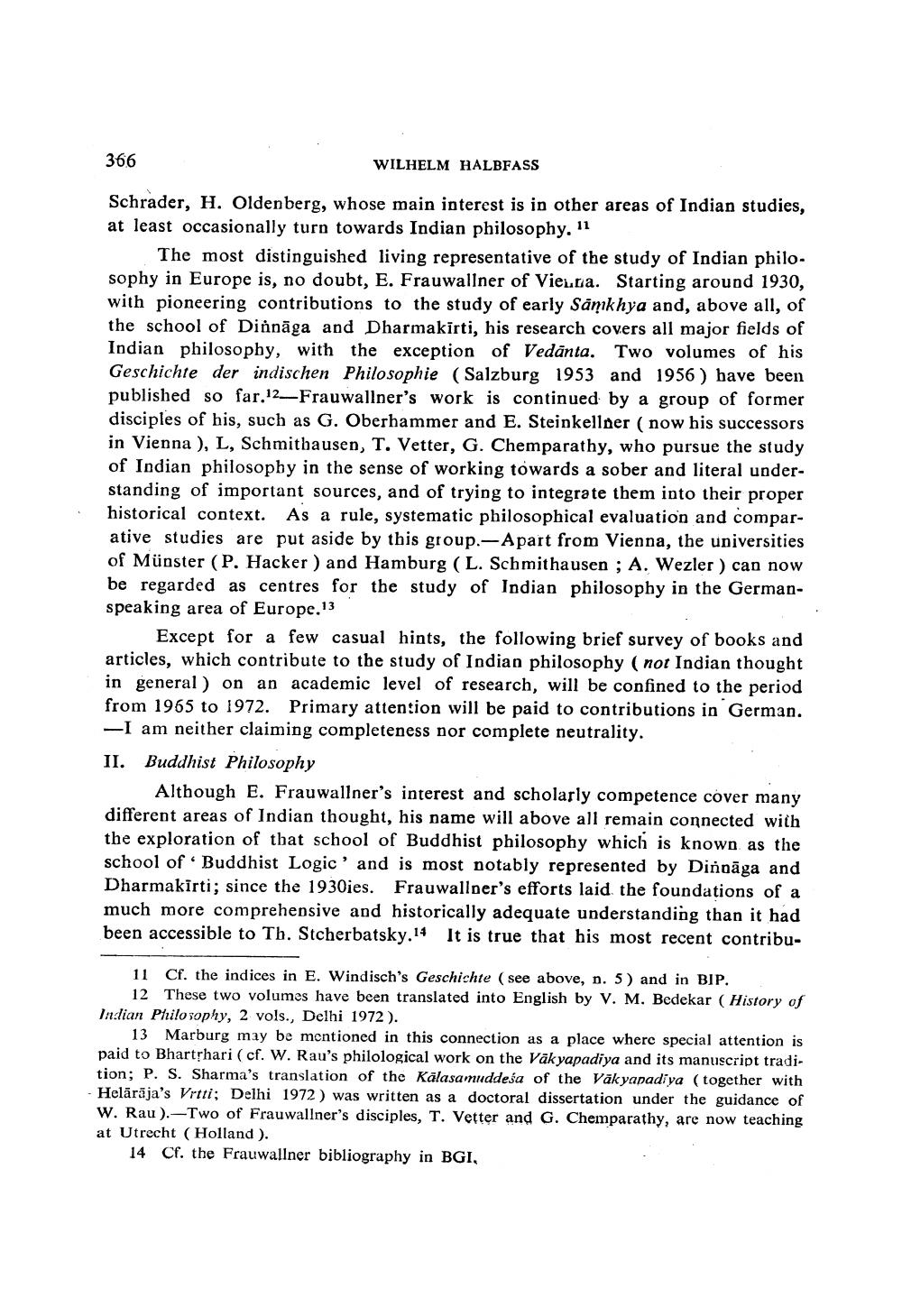________________
366
WILHELM HALBFASS
Schrader, H. Oldenberg, whose main interest is in other areas of Indian studies, at least occasionally turn towards Indian philosophy. 11
The most distinguished living representative of the study of Indian philosophy in Europe is, no doubt, E. Frauwallner of Vienna. Starting around 1930, with pioneering contributions to the study of early Samkhya and, above all, of the school of Dinnāga and Dharmakīrti, his research covers all major fields of Indian philosophy, with the exception of Vedānta. Two volumes of his Geschichte der indischen Philosophie (Salzburg 1953 and 1956 ) have been published so far.12—Frauwallner's work is continued by a group of former disciples of his, such as G. Oberhammer and E. Steinkellner (now his successors in Vienna), L, Schmithausen, T. Vetter, G. Chemparathy, who pursue the study of Indian philosophy in the sense of working towards a sober and literal understanding of important sources, and of trying to integrate them into their proper historical context. As a rule, systematic philosophical evaluation and comparative studies are put aside by this group.- Apart from Vienna, the universities of Münster (P. Hacker ) and Hamburg (L. Schmithausen ; A. Wezler ) can now be regarded as centres for the study of Indian philosophy in the Germanspeaking area of Europe.13
Except for a few casual hints, the following brief survey of books and articles, which contribute to the study of Indian philosophy (not Indian thought in general) on an academic level of research, will be confined to the period from 1965 to 1972. Primary attention will be paid to contributions in German. - I am neither claiming completeness nor complete neutrality. II. Buddhist Philosophy
Although E. Frauwallner's interest and scholarly competence cover many different areas of Indian thought, his name will above all remain connected with the exploration of that school of Buddhist philosophy which is known as the school of Buddhist Logic' and is most notably represented by Dinnāga and Dharmakīrti; since the 1930ies. Frauwallper's efforts laid the foundations of a much more comprehensive and historically adequate understanding than it had been accessible to Th. Stcherbatsky.14 It is true that his most recent contribu
11 Cf. the indices in E. Windisch's Geschichte (see above, n. 5) and in BIP.
12 These two volumes have been translated into English by V. M. Bedekar (History of Indian Philosophy, 2 vols., Delhi 1972 ).
13 Marburg may be mentioned in this connection as a place where special attention is paid to Bharthari (cf. W. Rau's philological work on the Vāk yapadiya and its manuscript tradition; P. S. Sharma's translation of the Kālasamuddeśa of the Vāk yapadiya (together with - Helārāja's Vrtti; Delhi 1972) was written as a doctoral dissertation under the guidance of
W. Rau).-Two of Frauwallner's disciples, T. Vetter and G. Chemparathy, are now teaching at Utrecht (Holland).
14 Cf. the Frauwallner bibliography in BGI,




